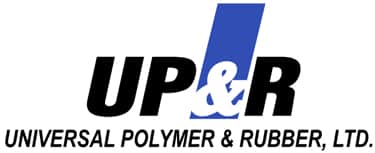Category Archive: Automotive Industry
The automotive industry in America is huge, with more people traveling by car than any other mode of transport. In 2016, automotive sales are growing at the fastest pace since 2000. Most companies are beating their sales expectations and automakers posted a 6.9% sales increase in February, compared with a year earlier. While these numbers are positive, they are not sharing the full story on the state of the American automotive industry.
While sales numbers are up, North American production is only up 4% on the year. Production is being supplemented by imports coming in from Europe and Japan. This hurts the idea that an increase in sales means an increase in the production of vehicles by American automotive companies. Also contributing to the high sales numbers are the large number of SUVs that are being purchased as opposed to smaller sedans. SUVs are hugely profitable for automotive companies compared to smaller sedans. Sales numbers are also up in 2016 due to lower price of gas. As gas prices keep dropping across the nation, automobiles become more affordable for the average American, but this could change if gas prices begin to rise again.
Though the numbers for automobile sales have been positive in 2016, there have also been a few news stories that have the potential to tarnish this good news. Volkswagen is still dealing with the fallout of its diesel emissions scandal, and other diesel car companies are having their emissions numbers scrutinized as well. Testing is becoming stricter as the European Commission works to make sure small diesel car models are not producing more pollution than allowed. Also, Fiat Chrysler is facing a lawsuit from auto dealerships alleging that its U.S. unit was offering money to falsify sales. These stories are contributing to the idea that those American automobile sales may not be as healthy as they look.
As a manufacturer of rubber molded parts, rubber extruded parts and plastic extruded parts, UP&R works with many different industries including the automotive industry. Take a look at our website for all our products and services.
Every year, we at Universal Polymer and Rubber see a downturn in manufacturing activity. With the holidays here, along with cold weather, many manufacturers are slowing down their production. This in turn means that we, too, have to slow our production down to reduce our inventory and lessen our payables. Some of this also comes thanks to the traditional end of the fiscal year, when companies are putting off on ordering more until they have their financial information completed.
While some manufacturers may see a slowing of production at the end of the year manufacturing climate as a bad thing, we see it as an opportunity. It allows us to accomplish a number of tasks such as:
- Perform preventative maintenance throughout our plant to reduce the likelihood of problems through our busy times.
- Review our yearly performance and develop long-term plans for moving forward.
- Work with our staff to find areas where improvements can be made, in processes, as well as equipment being used on a daily basis.
- Develop plans for further training of our workers to help them be up to date on the machines and processes.
- Take a look at our capital expenditures throughout the previous year, and plan any for the upcoming year.
- Take a look at the big picture and make sure that we are moving towards our goals.
By using our down time to develop and grow, we stay ahead of the curve for when manufacturing picks back up at the beginning of the New Year. This allows us to stay on the cutting edge of production, and continue to be a leading company in the area of polymers and rubber products.
If you look at the news and numbers focused around America’s auto industry, what you see, at first, is that it’s in a recovery phase, and that production is up.
This is true—July production was up by 10%, and overall production is up by about 7.5%.[1] However, as with anything, to get the full picture, you must really scratch beneath the surface. Major auto makers, such as Nissan and Chrysler, are seeing booming sales and therefore booming production. Likewise, if you’re a supplier working with them, then your business is booming accordingly.
But the fact is, these two companies make up a large part of the overall auto production, but they aren’t the only ones in existence. While their numbers contribute significantly to the statistics, there are plenty of other auto makers and suppliers that haven’t launched new models and seen sales skyrocket, and therefore are still in for a longer, slower recovery.
Articles such as this one point out that while Nissan is currently in the process of expanding its North American facilities, “the auto industry is in another, long-term disruptive phase” that can bring new opportunities, but other challenges as well. Mexico’s auto expansion, for instance, has “raised alarm bells.”
Additionally, while the auto suppliers, who are serving the needs of the few, highly successful auto makers, are therefore expanding, many others are “investing in new products and technological capabilities, not new bricks and mortar,” and are remaining cautious, as “history tells us that global political unrest or a sudden spike in fuel prices can put the brakes on sales momentum in a heartbeat.”[2]
The fact is, America’s auto industry is a great one, as are the numerous suppliers that keep it going. But while some can’t keep up with demand, plenty of others are still struggling, and it’s important to look beyond the surface numbers. It’s critical to examine all the facts and not assume that a few great success stories mean that everyone’s business is surging.
The hope is that we will all see continued recovery and success in the future, but we must also remain cautious and realistic, and not take everything at face value.
[1] https://www.industryweek.com/global-economy/strong-auto-production-spurs-us-factory-growth-july
[2] https://wardsauto.com/blog/wised-suppliers-expand-new-tech-not-more-volume
If you work in the automotive industry, you may have heard about the possibility of returnable packaging—sending packing containers back to the supplier in order to be more sustainable and eco-friendly. It was a growing trend in the 1990’s, when more and more people in the industry were pushing for it. So where does returnable packaging stand now, and why isn’t there more of it?
While it seemed like a great idea at the time—who doesn’t want to do better things for the environment?—many soon realized that the cost of returning packaging simply didn’t make smart business sense. While it’s a fantastic idea if the supplier is located a short distance away, it’s not uncommon in today’s logistical environment for a supplier to be located hundreds of miles away. In the case of returnable packaging, someone has to bear the extreme cost associated with its return, and the cost was simply too much.
Personally, we have seen that returnable packaging is not attractive to most of our automotive clients. While we supply 20-25 tier 1 suppliers, only one of those suppliers practices this policy. For the rest, the financial burden is too much. And when it comes to the auto industry, costs are a huge driver, and the supply chain must do what’s most cost effective in order to remain competitive and keep a healthy bottom line.
Furthermore, many companies who once partook in the practice found that returning packaging proved to not always be as positively green as people had hoped. As an example, when Toyota first began implementing waste reduction programs, one of their measures included a returnable packaging system. However, shortly after its implementation, they found that while trying to be more sustainable, the opposite was happening. According to a Toyota executive, they soon realized “we were reducing a waste that was formerly recycled, and our recycling rate got worse. So our strategic indicator was telling us to not implement more returnable packaging programs.”
While we’re all mindful of sustainable, efficient business, it’s a competitive landscape, and, as in any industry, ideas that are not practical are not going to be able to become universally adopted.


